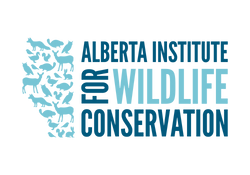👇 Psst... scroll down to fill out the details and add to your cart! 👇


Each package comprises a personalized certificate with the recipient's name, an 8 x 10 photo, and qualifies for a tax receipt.
🎁 Holiday Shipping Update: Due to the Canada Post strike, expect delays on physical sponsorships. Order by Dec 7 for the best chance of delivery. Digital sponsorships send instantly!
(Bubo virginianus). Patient Number 25-939.
Date of admission: June 25, 2025.
Reason for admission: Physical Injury.
Patient History:
In 1977, Alberta schoolchildren voted to choose a provincial bird, selecting the great horned owl—an honor the species still holds today. With their distinctive feather tufts, or “horns,” great horned owls are among the province’s most recognizable birds. They can be found across Alberta but are especially drawn to wooded areas and river valleys. Hardy and resilient, they remain in Alberta year-round and are well-adapted to endure the cold winter months.
Great horned owls are nocturnal hunters, relying on exceptional eyesight and hearing to locate prey in the dark. Their diet is varied, consisting mainly of rodents, birds, and hares. These owls typically form lifelong pairs, with both parents sharing in the care of their young. Each breeding season, usually in late February or early March, two to three eggs are laid and tended until the owlets hatch.
This Great Horned Owl was rescued from Wheatland County, AB, after being found grounded. Upon arrival at our centre, it was discovered that the owl was suffering from chronic (old) fractures of the right radius and ulna that had healed improperly, forming a callus and resulting in partial fusion of the two bones. Surgical repair was performed to break down the callus and improve wing alignment.
Post-surgery, the owl has shown strong flight ability and good lift, and recent X-rays show positive remodeling. However, he is still early in recovery, and we are closely monitoring for any weakness or complications, such as a wing droop. This owl will continue to receive extended flight conditioning, and we hope to see further improvement as the callus remodels and tendons regain mobility.
Thank you for supporting their care!
